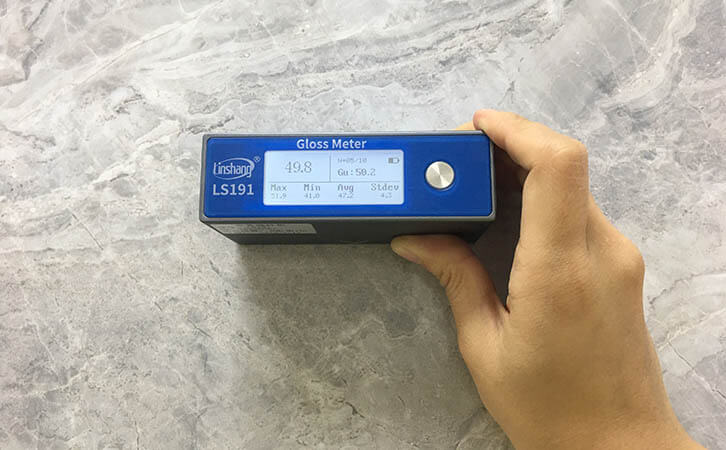Gloss Meter Used in Stone and Furniture industry
For the control of stone gloss, there is a standard quota requirement for color difference in the project. The quota standard is generally formulated by the construction staff and the customer. In the process of project implementation, color selection is generally carried out by testing and evaluating the standard sample materials provided by the customer under the D65 light source in the standard light source box. Of course, if the stone is placed in a special lighting environment, the gloss meter must be adjusted according to the customer's needs. Next we can briefly understand how to control the gloss of the stone.
Material selection: 1. Determine the quantity and location of the stone; 2. If the stone is directly mined, a comprehensive assessment of the original mine is required, from the quantity, quality stability, mining supply capacity, trial mining, trial production, quality. 3. Use the gloss meter to measure the gloss of the collected samples, select the appropriate mines, re-screen the mined blocks. 4. Make the coded material stone into a plate and test it again with gloss meter to select high-quality stone. 5. After selecting, store different batches and different stone labels.
Color comparison: 1. When processing stone, first set up the gloss meter and contrast color samples and classify the stone according to four grades A, B, C, and D; 2. According to the different requirements of each customer, then determine the gloss and sample; 3. According to the comparison sample, the classification are performed again when cutting according to the block color. In order to ensure that the color of the single-sided wall of the stone used in the project curtain wall is the same, we strictly use the gloss meter to check the gloss before using the stone.
The gloss of the tiles is controlled and the production process of the tiles is complicated, which inevitably causes the unevenness of the tiles surface. The gloss of tiles is difficult to control, so the gloss distribution is uniform. Tiles without color difference are particularly rare. At present, the gloss of tiles is still tested by manual methods. Certain instruments must be used in the process of manual testing. This instrument is not only stable in performance and complete in function, but also very convenient to use.
Tiles are generally produced in batches, so the detection of its gloss is also carried out in batches. Inspection one by one will consume a lot of manpower. The spectrophotometer is installed in the production process and a reasonable tolerance range is set inside the instrument. When it is mass-produced, it will automatically start detection and reject unqualified products.
The gloss detection space required by different products is the same. RGB gloss space is generally used for the gloss control of tiles. RGB gloss space does not exist in ordinary gloss instruments, so ordinary gloss meters cannot solve the gloss problem of tiles. Therefore, in the process of selecting a gloss meter, you must choose a suitable one that is suitable for this industry. Otherwise, the equipment that you spend money on will not be effective and will waste resources.
